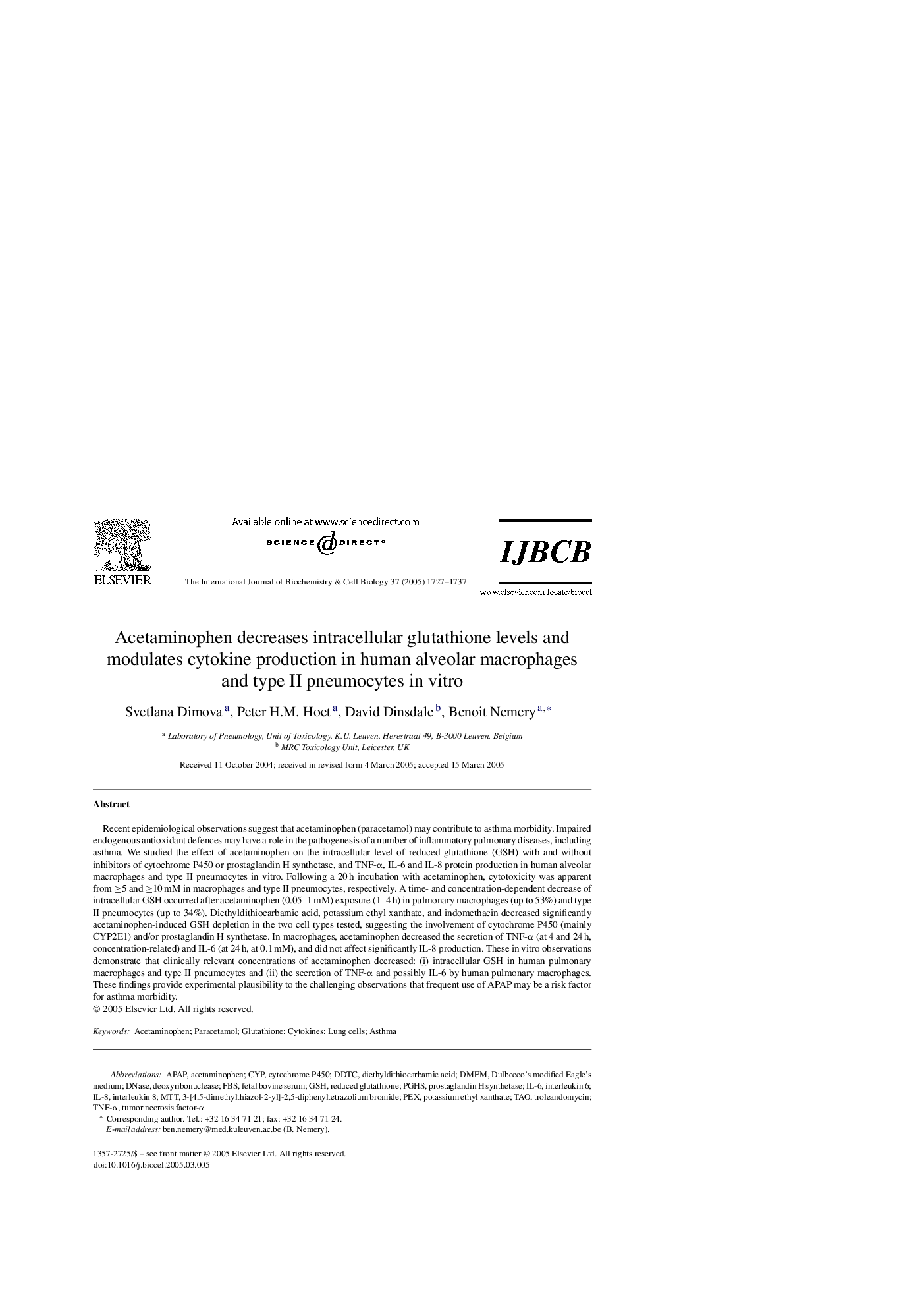| Article ID | Journal | Published Year | Pages | File Type |
|---|---|---|---|---|
| 9889983 | The International Journal of Biochemistry & Cell Biology | 2005 | 11 Pages |
Abstract
Recent epidemiological observations suggest that acetaminophen (paracetamol) may contribute to asthma morbidity. Impaired endogenous antioxidant defences may have a role in the pathogenesis of a number of inflammatory pulmonary diseases, including asthma. We studied the effect of acetaminophen on the intracellular level of reduced glutathione (GSH) with and without inhibitors of cytochrome P450 or prostaglandin H synthetase, and TNF-α, IL-6 and IL-8 protein production in human alveolar macrophages and type II pneumocytes in vitro. Following a 20 h incubation with acetaminophen, cytotoxicity was apparent from â¥5 and â¥10 mM in macrophages and type II pneumocytes, respectively. A time- and concentration-dependent decrease of intracellular GSH occurred after acetaminophen (0.05-1 mM) exposure (1-4 h) in pulmonary macrophages (up to 53%) and type II pneumocytes (up to 34%). Diethyldithiocarbamic acid, potassium ethyl xanthate, and indomethacin decreased significantly acetaminophen-induced GSH depletion in the two cell types tested, suggesting the involvement of cytochrome P450 (mainly CYP2E1) and/or prostaglandin H synthetase. In macrophages, acetaminophen decreased the secretion of TNF-α (at 4 and 24 h, concentration-related) and IL-6 (at 24 h, at 0.1 mM), and did not affect significantly IL-8 production. These in vitro observations demonstrate that clinically relevant concentrations of acetaminophen decreased: (i) intracellular GSH in human pulmonary macrophages and type II pneumocytes and (ii) the secretion of TNF-α and possibly IL-6 by human pulmonary macrophages. These findings provide experimental plausibility to the challenging observations that frequent use of APAP may be a risk factor for asthma morbidity.
Keywords
troleandomycinPGHSDDTCTAOIL-6DMEMFBSIL-8CyPAPAPGSHPEXdeoxyribonuclease3-[4,5-dimethylthiazol-2-yl]-2,5-diphenyltetrazolium bromideDNAseDulbecco's modified Eagle's mediumMTTAsthmaPotassium ethyl xanthateAcetaminopheninterleukin 6Interleukin 8tumor necrosis factor-αDiethyldithiocarbamic acidfetal bovine serumLung cellsCytochrome P450CytokinesTNF-αParacetamolreduced glutathioneGlutathione
Related Topics
Life Sciences
Biochemistry, Genetics and Molecular Biology
Biochemistry
Authors
Svetlana Dimova, Peter H.M. Hoet, David Dinsdale, Benoit Nemery,
